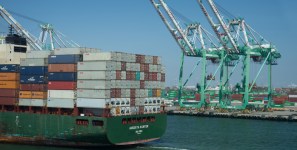Chinese Cargo Ships Navigate Arctic Northern Sea Route as Alternative to Red Sea
Chinese general cargo vessels have started exploring a new route to bypass the Red Sea, opting for the Arctic Northern Sea Route (NSR).
Read also: Container Rates Surge Amid The Red Sea Crisis
New New Shipping’s vessels, Xin Xin Hai 1 and Xin Xin Hai, have embarked on a voyage through the thawing NSR, made accessible with the help of icebreakers during the summer months.
According to scientists, climate change and melting ice sheets could soon render this Arctic passage navigable year-round. The route offers a shorter journey of approximately 13,000 kilometers from China to Northern Europe, significantly reducing the 20,000-kilometer voyage through the Suez Canal and slashing the distance needed to navigate around the Cape of Good Hope by nearly half.
The shorter route could provide shipping lines with a competitive edge, potentially challenging faster transport modes. However, Arctic navigation remains complex, especially for container vessels. Ships traversing this route will require ice-strengthened hulls to withstand encounters with small floating ice formations, even when following in the wake of an icebreaker.
European shipping lines also face the dilemma of navigating the political sensitivities surrounding the NSR. The route is heavily reliant on Russian search-and-rescue (SAR) capabilities and is set to benefit from a $7.7 billion investment by the Russian government. Russian premier Vladimir Putin remarked early last year, “Whether this is good or bad, it is happening – the Northern Sea Route is opening up.”
The Trans-Siberian Railway, which facilitates Chinese trains traveling to Europe via Russian-installed tracks, has already demonstrated that practical considerations can sometimes outweigh political concerns. Whether this approach will extend to the shipping industry remains uncertain.
While climate activists may be uneasy about increased maritime activity in the fragile Arctic region, the reduced fuel consumption and CO2 emissions from shorter transits could play a crucial role in the broader efforts to decarbonize cargo transport.





Leave a Reply